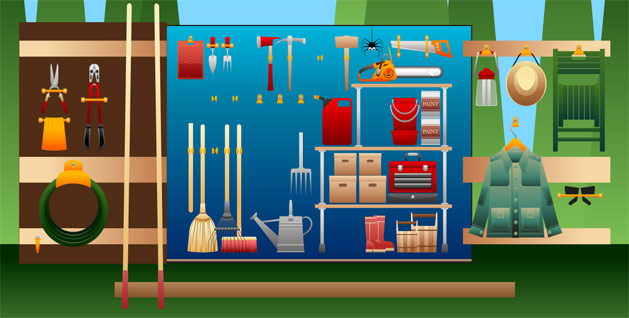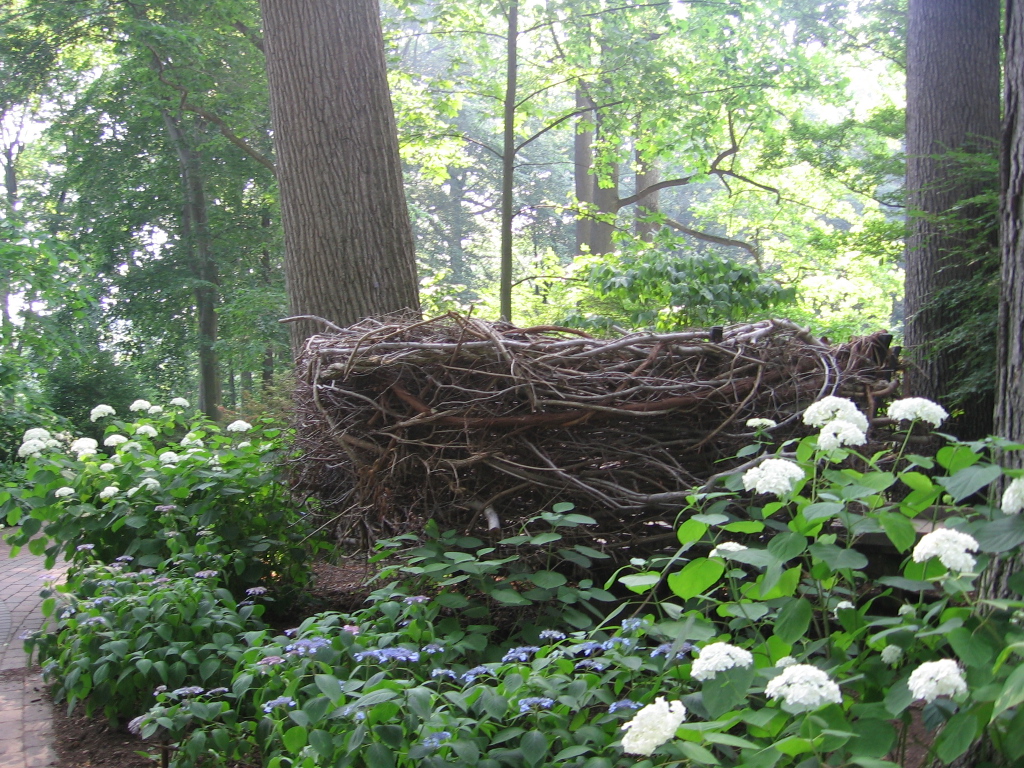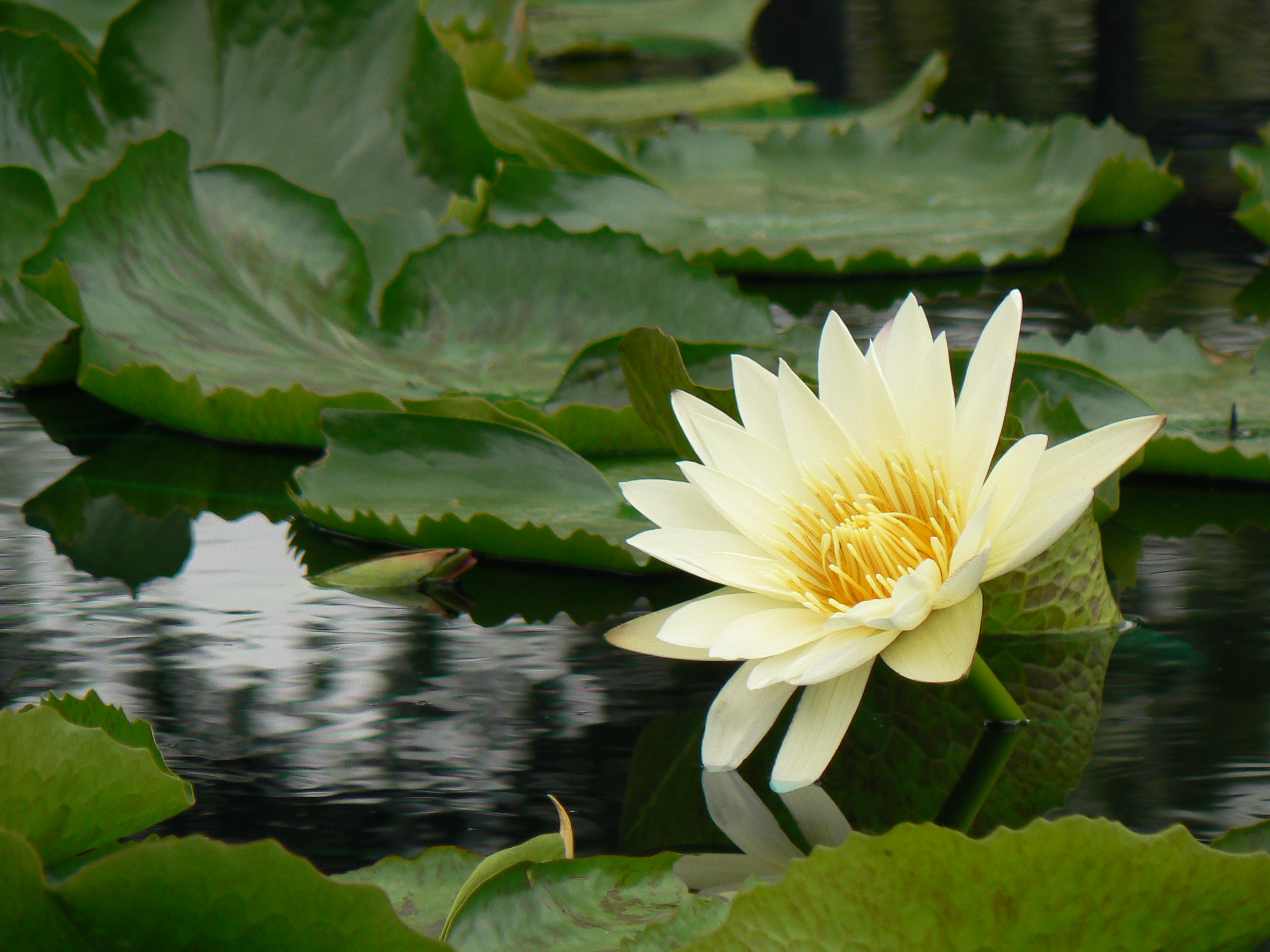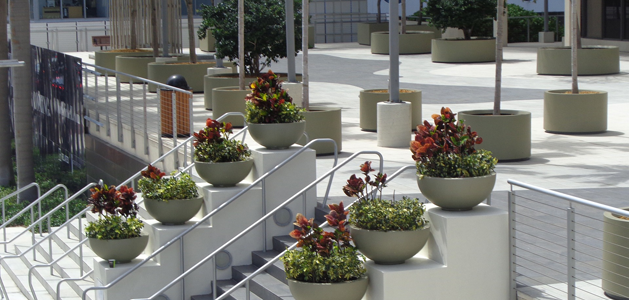How Does Your Garden Grow?
Students design a functional and beautiful garden for a particular audience, developing a scale model, determining costs and materials, and creating a guide explaining how to care for the garden.

Task
Your local garden center wants to encourage people to plant their own gardens, and is hoping that interest in environmental issues can help boost interest in gardening. They have asked for your help in creating a variety of small garden designs that they can show to customers who are interested in saving water, cooking with foods they have grown, or just “greening up” their home environment.
Student teams will design a small garden that is uniquely suited to a specific environment. They will work together to create a scale drawing, a list of needed non-plant materials and estimated costs, a list of suggested plants and estimated costs, as well as an instruction manual with the basics of care for the garden. Teams will present their garden designs and implementation materials at a community garden fair.
Engage
From conserving water to organic gardening, environmental issues have most students talking these days. Use this interest to help engage them in the study of plants and their role in small ecosystems.
If students’ families have a home or community garden plot, ask them what crops are grown. With some prompting, they may also be able to tell you different plants that are grown at different times of the year. Depending on where you live, students may also have fruit or nut trees in their yards.

If students live in apartments, prompt them to think of unique “gardens” they have seen in small spaces. You might prompt them with examples, like a cherry tomato plant on the porch, a small pot of cilantro by the sink, or a bonsai tree in the living room.
Encourage students to brainstorm other unique gardens they have seen. Botanical gardens usually have all types of plants, but students may have also heard of or visited a xeriscape garden, an aquatic garden, or even a park with a restored prairie. You might even get them interested with an excerpt of National Geographic’s Pond Stars!
Depending on your goals for exploring ecosystems and movement of matter, this may be a time to bring up concepts like organic and genetically modified, as well as stories about pesticide use such as DDT and other chemicals with effects that are beneficial to plants but disastrous to animals.
You can also connect what your students are learning about American Colonial History and ecosystems in science by exploring the colonists’ utilization of the “Three Sisters” style of companion planting. The Three Sisters name was coined by the Iroquois and used widely by many Native Americans groups.
In this “companion planting” style of gardening, corns, beans, and squash are grown together. Beans use the corn stalk as natural place to climb, help to stabilize the corn stalk in the wind, and boost nitrogen content in the soil, which benefits the other plants. Squash grows around the base, shading the soil and preventing both the growth of weeds and the loss of moisture. The sharp hairs on the squash also help to keep pests like mice and raccoons from eating the crops.
Once you have piqued student interest in plants and gardening, let them know that they will create a garden design and develop materials to help people interested in this type of garden implement on successfully.
Create
Form small teams of students. It will be helpful to include a science “expert” in each group to serve as the visionary who can evaluate the accuracy and quality of design.
Instead of starting with a specific garden type in mind, have the team focus on the type of person they are creating the garden for. For example, does the person want to:
- Landscape while saving water.
- Grow their own food or herbs.
- Add a water feature to their yard.
- Create a garden inside their home or apartment.
- Create a garden habitat native to the region in which they live
Designing with a specific user in mind generally makes it easier to define the problem and narrow the scope of the project. It also supports a design thinking mentality of Frame-Imagine-Create.
Have them complete a cluster organizer or character trait worksheet to practice descriptive writing as they identify and define who they are designing for.
Give students parameters and requirements for their work such as:
- A scale design for a garden.
- Suggested plants for the garden and an explanation of why these represent a healthy ecosystem or habitat.
- A description of the design that includes information about it, as well as which type of person would benefit most from this type of garden.
- Care and maintenance instructions for the plants in the garden.
You may want to provide more specific expectations, such as choosing a particular planter size available at a typical garden center. When you share the project assessment criteria, you could also let students know that a list with three suggested plants will earn 10 points, while a list with more than 10 will earn 50 points.
Once you determine parameters for their work, let students choose how they will meet them. For example, their design description could take the form of a poster, brochure, slide show presentation, or even a video advertisement. You might want to brainstorm as a group different ways students can share information as well as the resources available to them.
Depending on your available resources and student experience, you may want to provide specific suggestions. For example, you may suggest the grid paper in Wixie to help with scale drawing, but also have sheets of grid paper available for those who aren’t as comfortable with technology.
You may also want to choose roles for each team member, such as lead designer, architect, researcher, writer, editor, and speaker. Depending on your goals for their learning, you might also have every team member take the role of research and writer for a day or specific component of the project.
Once student teams have chosen their audience and the type of garden they think will be most attractive to this audience, have them begin researching. They need to learn about the plants, soil, nutrients, care, and pests for a successful design.

As they explore the plants that would work in their garden, encourage them to collect research in a three-column organizer that includes the plant name, description, and pros and cons about its use. Students could also create a larger table with additional columns for size, water needs, sunlight needs, and feeding. They should not choose the first plants they find; rather, their research should help them choose the best plants from the many they learn about.
Once they have chosen plants to include, the team should work together to organize the plants into the allotted space. Encourage them to consider how the customer will access each plant for care, how it will appear (color and beauty), as well as how companion plants may be mutually beneficial.
Once they have a design created, team members need to think about how they will present a general description of their garden as well as care and maintenance instructions. They should be thinking about all of the materials they want to have available to share with potential customers at a garden fair.
Share
Have student teams present their designs to “critical friends” in your classroom. After sharing feedback, teams should make tweaks to the design and edits to their presentation.
Have students showcase their garden designs to interested community members. Host a Gardening Fair at your school or partner with a local nursery or garden center to have students present their ideas to customers at a special event. Explore additional options for distributing and displaying materials created by your students.
Assessment
Once you begin discussing the Three Sisters planting method, you will get a sense of student engagement in the topic, as well as begin evaluating prior knowledge and experience.
If you have students write about their target customers, you can evaluate their ability to empathize and write descriptively. If you implement this project more than one time, you can skip also this part and distribute/assign the first year’s examples!
The research students do to develop their list of suggested plants will give you both a window into their grasp of plant needs and ecosystems as well as help you see where they need additional support in organizing research information and note taking.
The scale drawing or design of the garden is their first chance to apply the knowledge gained in their research. Evaluate their drawings’ accuracy for size, complementary grouping, and maintenance. You might need to prompt the teams with questions about reaching plants to weed, prune, or pick.
Be sure to evaluate each team’s overall presentation. Confirm the content accuracy and rate the effectiveness of their presentations. Did they share their ideas creatively? Were they easy to read, find, hear?
Enlist the help of gardening center staff (or parent experts) to help you evaluate the designs and the presentation of the design to potential customers.
Resources
Celebrate the Three Sisters: Corn, Beans and Squash
Standards
Next Generation Science Standards
3-5-ETS1-Engineering Design
1. Define a simple design problem reflecting a need or a want that includes specified criteria for success and constraints on materials, time, or cost.
5-LS2-1.
Develop a model to describe the movement of matter among plants, animals, decomposers, and the environment. Develop a model to describe phenomena.
Common Core Standards for English Language Arts - 5
Writing
Text Type and Purpose
5.2 Write informative/explanatory texts to examine a topic and convey ideas and information clearly.
a. Introduce a topic clearly, provide a general observation and focus, and group related information logically; include formatting (e.g., headings), illustrations, and multimedia when useful to aiding comprehension.
b. Develop the topic with facts, definitions, concrete details, quotations, or other information and examples related to the topic.
d. Use precise language and domain-specific vocabulary to inform about or explain the topic.
Speaking and Listening
Presentation of Knowledge and Ideas
5.4 Report on a topic or text or present an opinion, sequencing ideas logically and using appropriate facts and relevant, descriptive details to support main ideas or themes; speak clearly at an understandable pace.
5.5 Include multimedia components (e.g., graphics, sound) and visual displays in presentations when appropriate to enhance the development of main ideas or themes.
ISTE NETS for Students 2016:
3. Knowledge Constructor
Students critically curate a variety of resources using digital tools to construct knowledge, produce creative artifacts and make meaningful learning experiences for themselves and others. Students:
a. plan and employ effective research strategies to locate information and other resources for their intellectual or creative pursuits.
b. evaluate the accuracy, perspective, credibility and relevance of information, media, data or other resources.
c. curate information from digital resources using a variety of tools and methods to create collections of artifacts that demonstrate meaningful connections or conclusions.
d. build knowledge by actively exploring real-world issues and problems, developing ideas and theories and pursuing answers and solutions.
4. Innovative Designer
Students use a variety of technologies within a design process to identify and solve problems by creating new, useful or imaginative solutions. Students:
b. select and use digital tools to plan and manage a design process that considers design constraints and calculated risks.
d. exhibit a tolerance for ambiguity, perseverance and the capacity to work with open-ended problems.
6. Creative Communicator
Students communicate clearly and express themselves creatively for a variety of purposes using the platforms, tools, styles, formats and digital media appropriate to their goals. Students:
a. choose the appropriate platforms and tools for meeting the desired objectives of their creation or communication.
b. create original works or responsibly repurpose or remix digital resources into new creations.
c. communicate complex ideas clearly and effectively by creating or using a variety of digital objects such as visualizations, models or simulations.
d. publish or present content that customizes the message and medium for their intended audiences.












